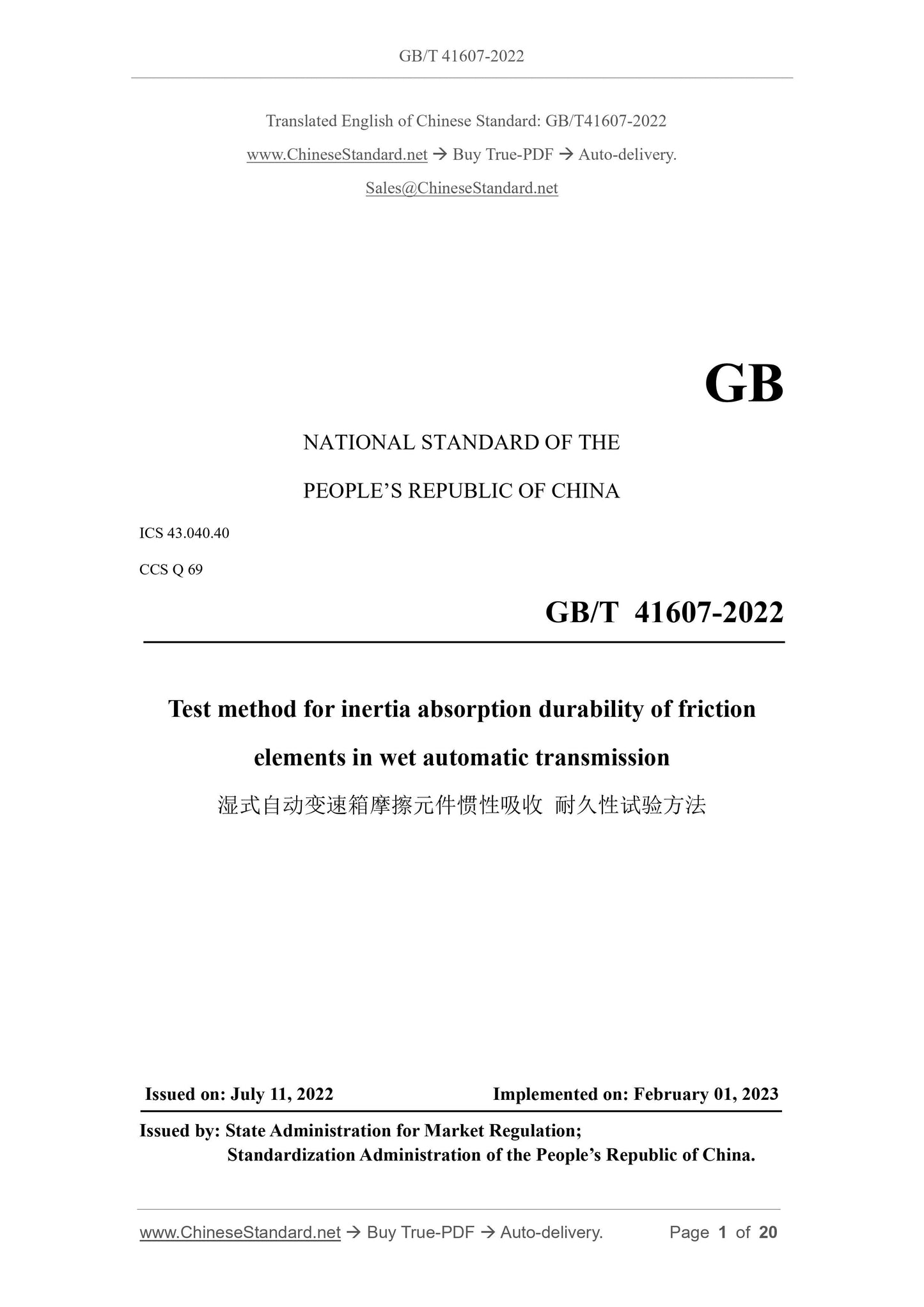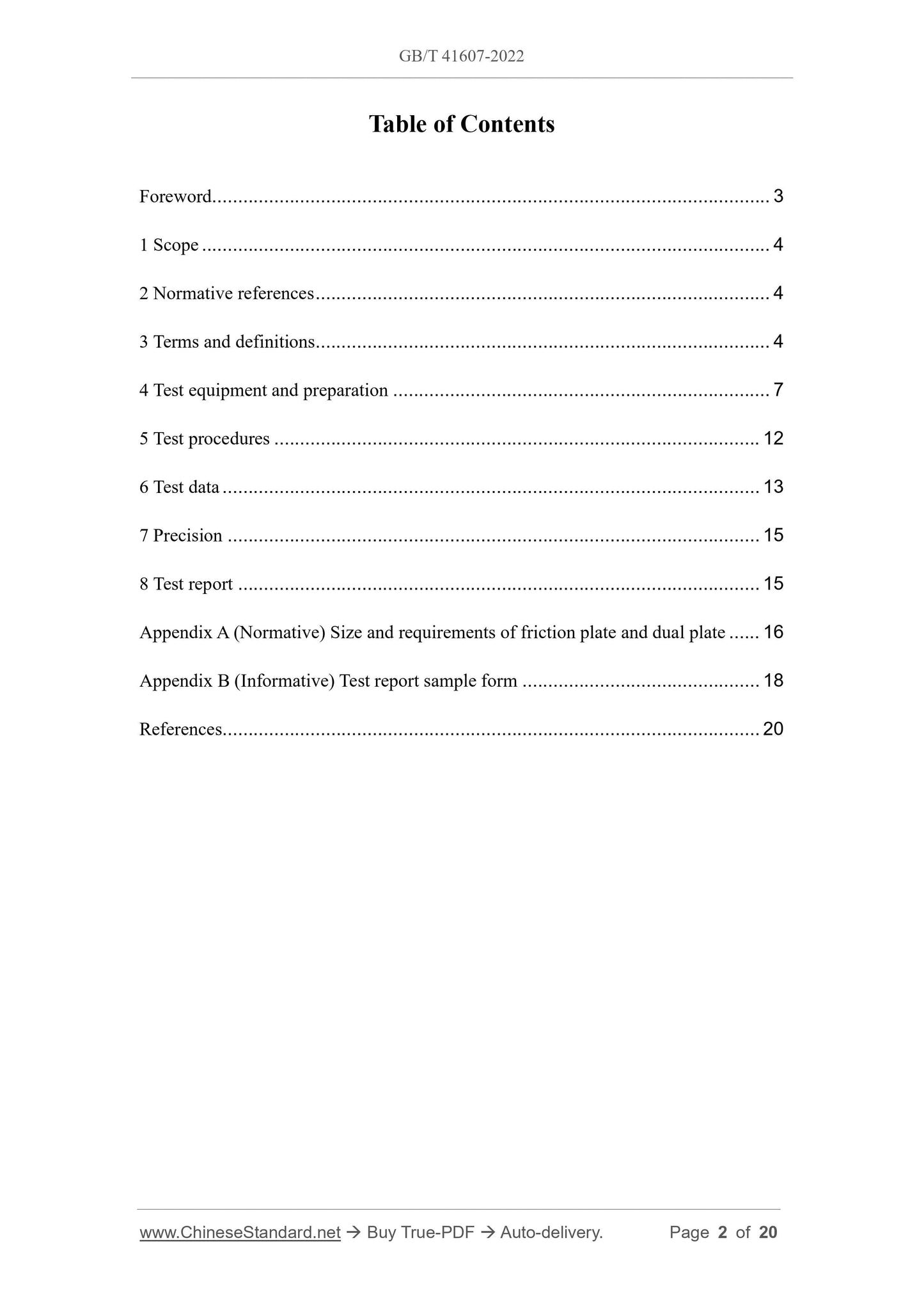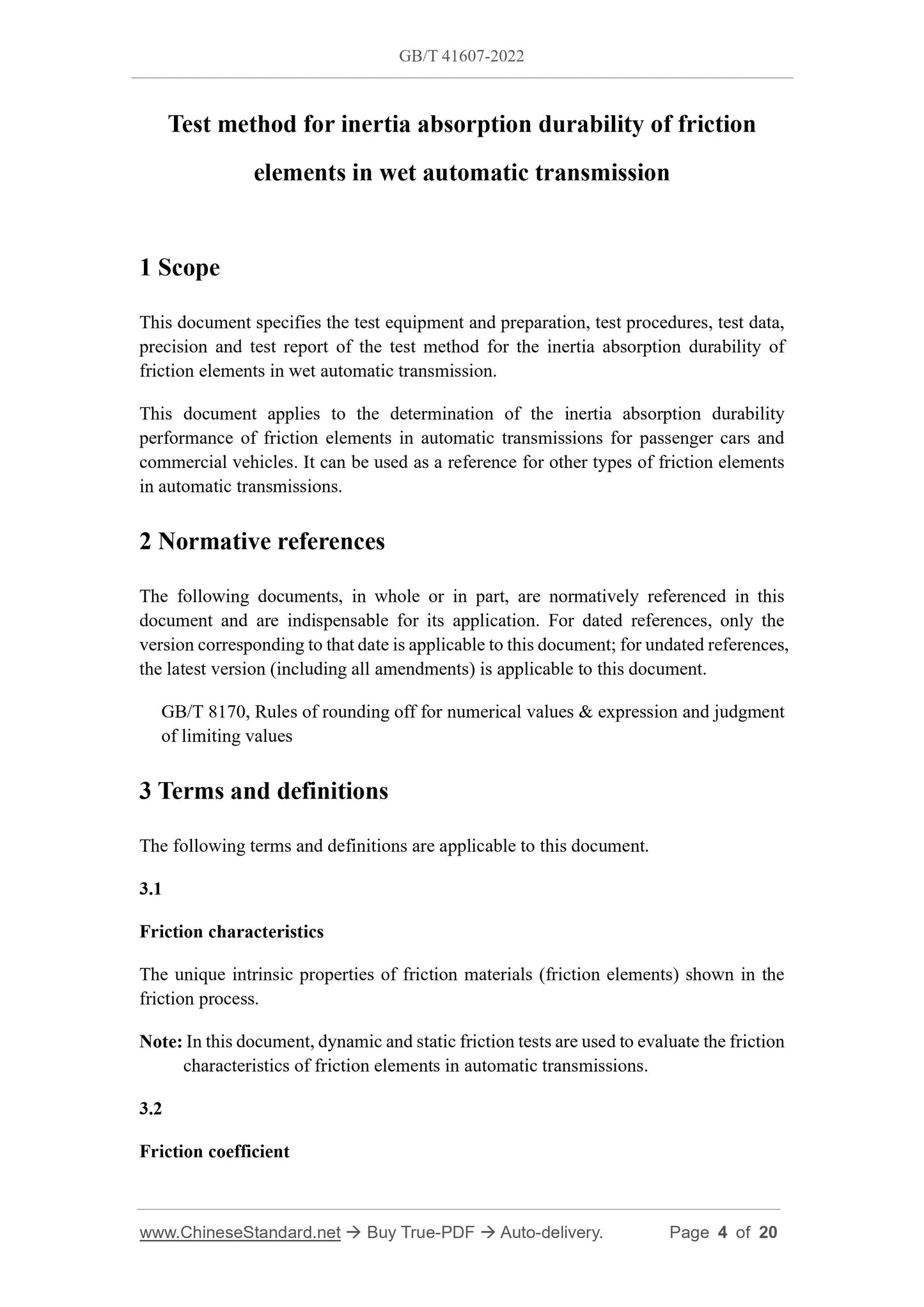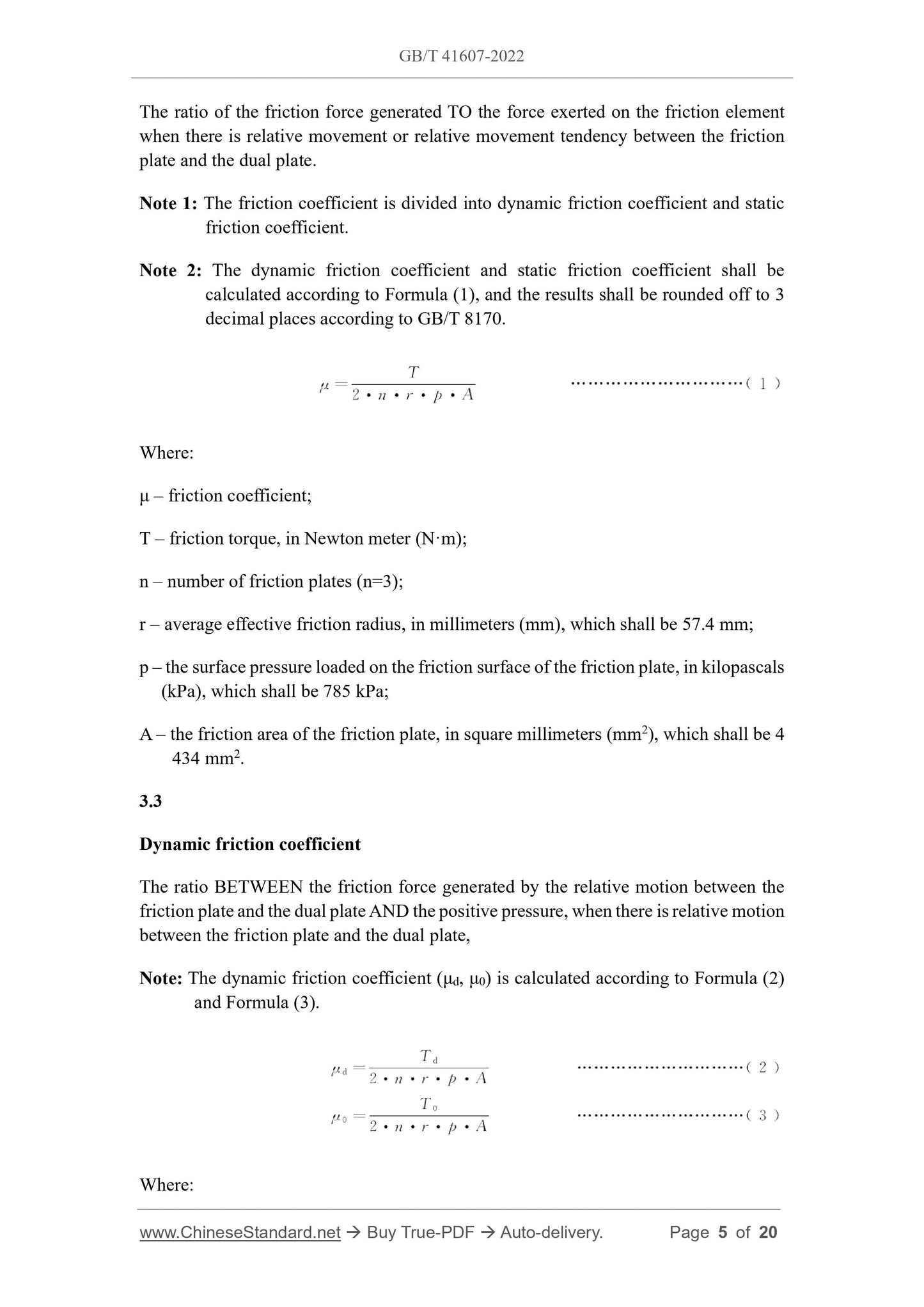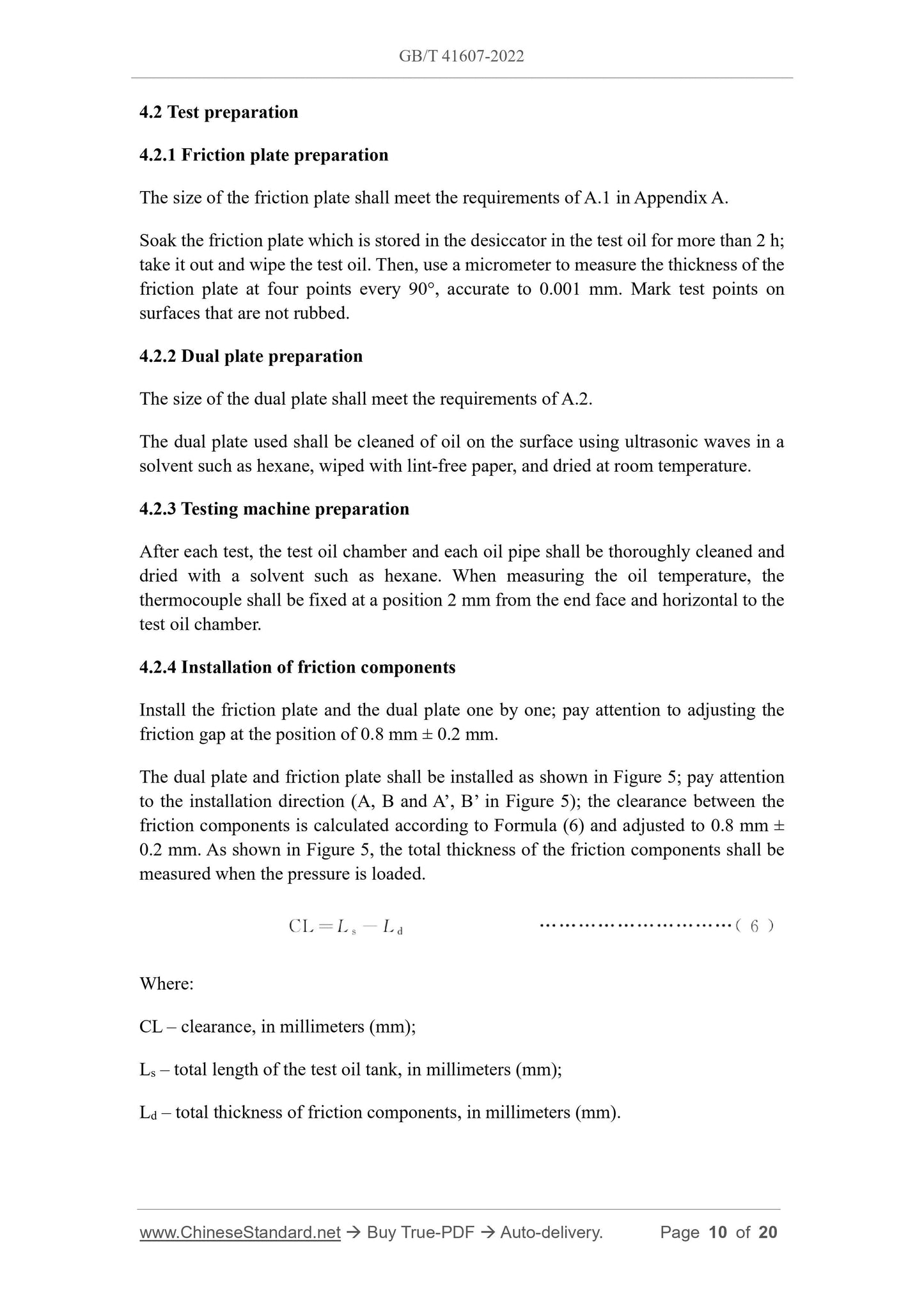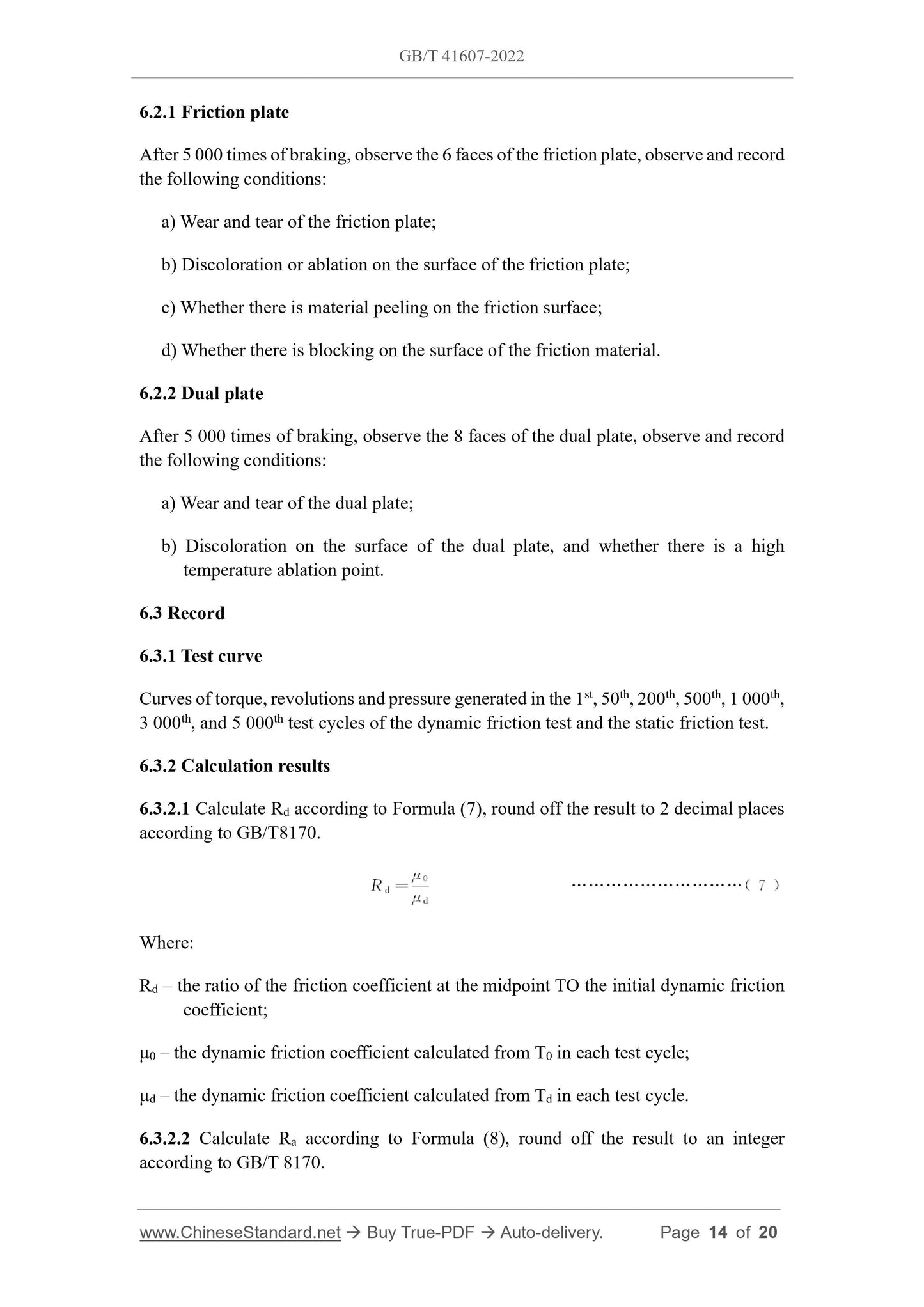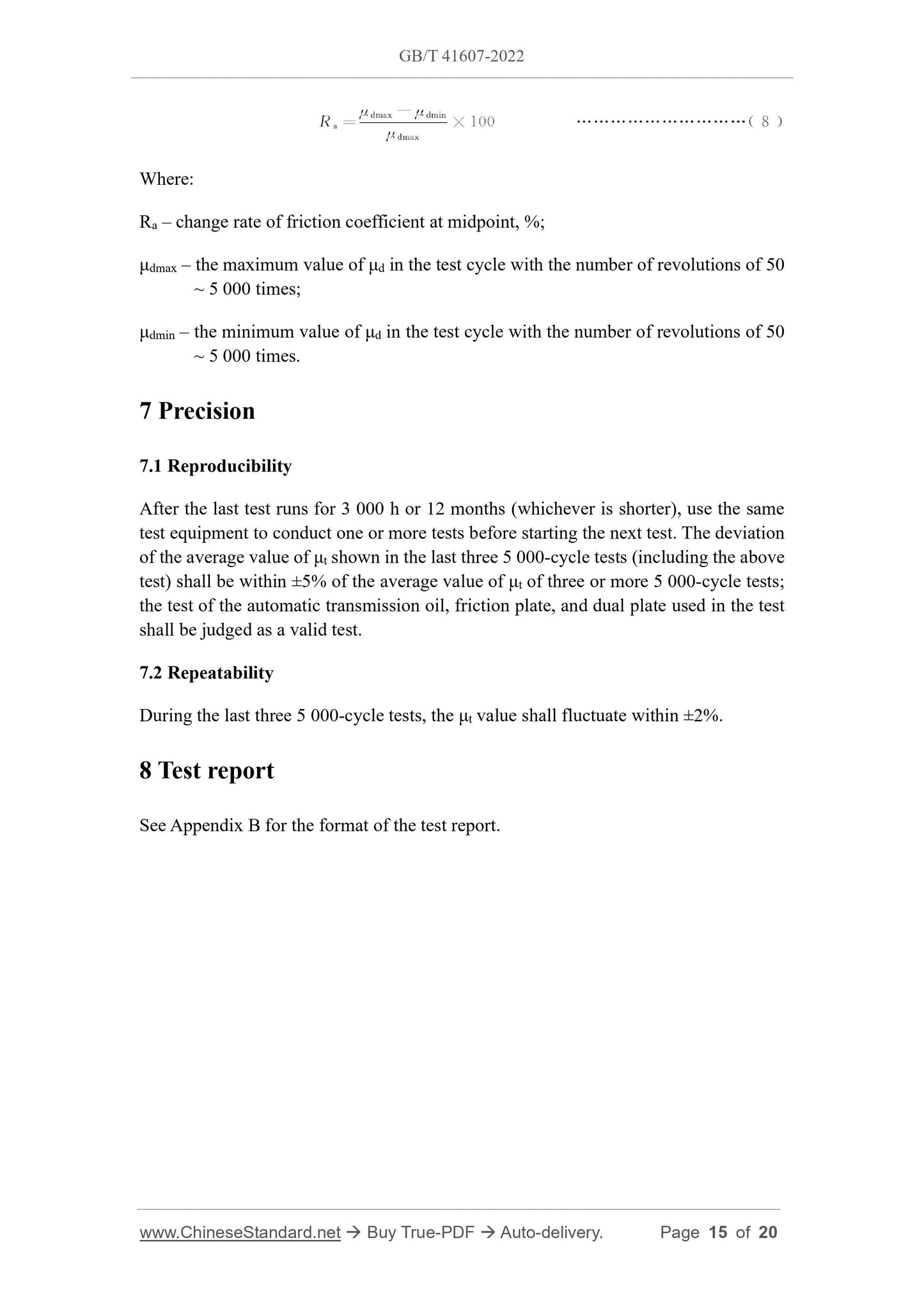1
/
of
7
www.ChineseStandard.us -- Field Test Asia Pte. Ltd.
GB/T 41607-2022 English PDF (GB/T41607-2022)
GB/T 41607-2022 English PDF (GB/T41607-2022)
Regular price
$260.00
Regular price
Sale price
$260.00
Unit price
/
per
Shipping calculated at checkout.
Couldn't load pickup availability
GB/T 41607-2022: Test method for inertia absorption durability of friction elements in wet automatic transmission
Delivery: 9 seconds. Download (and Email) true-PDF + Invoice.Get Quotation: Click GB/T 41607-2022 (Self-service in 1-minute)
Newer / historical versions: GB/T 41607-2022
Preview True-PDF
Scope
This document specifies the test equipment and preparation, test procedures, test data,precision and test report of the test method for the inertia absorption durability of
friction elements in wet automatic transmission.
This document applies to the determination of the inertia absorption durability
performance of friction elements in automatic transmissions for passenger cars and
commercial vehicles. It can be used as a reference for other types of friction elements
in automatic transmissions.
Basic Data
| Standard ID | GB/T 41607-2022 (GB/T41607-2022) |
| Description (Translated English) | Test method for inertia absorption durability of friction elements in wet automatic transmission |
| Sector / Industry | National Standard (Recommended) |
| Classification of Chinese Standard | Q69 |
| Word Count Estimation | 18,184 |
| Issuing agency(ies) | State Administration for Market Regulation, China National Standardization Administration |
Share
